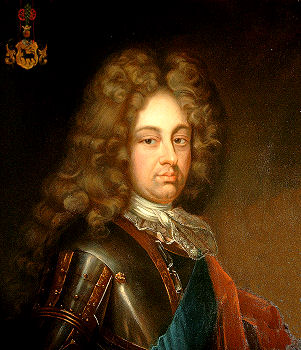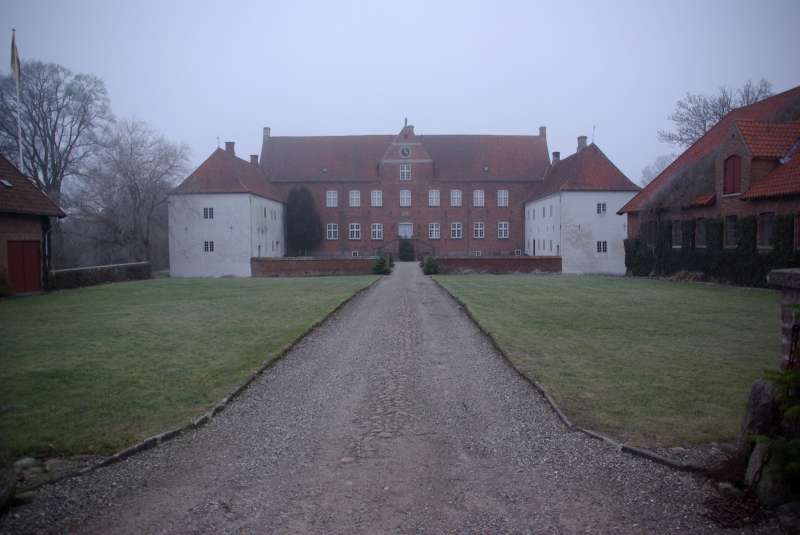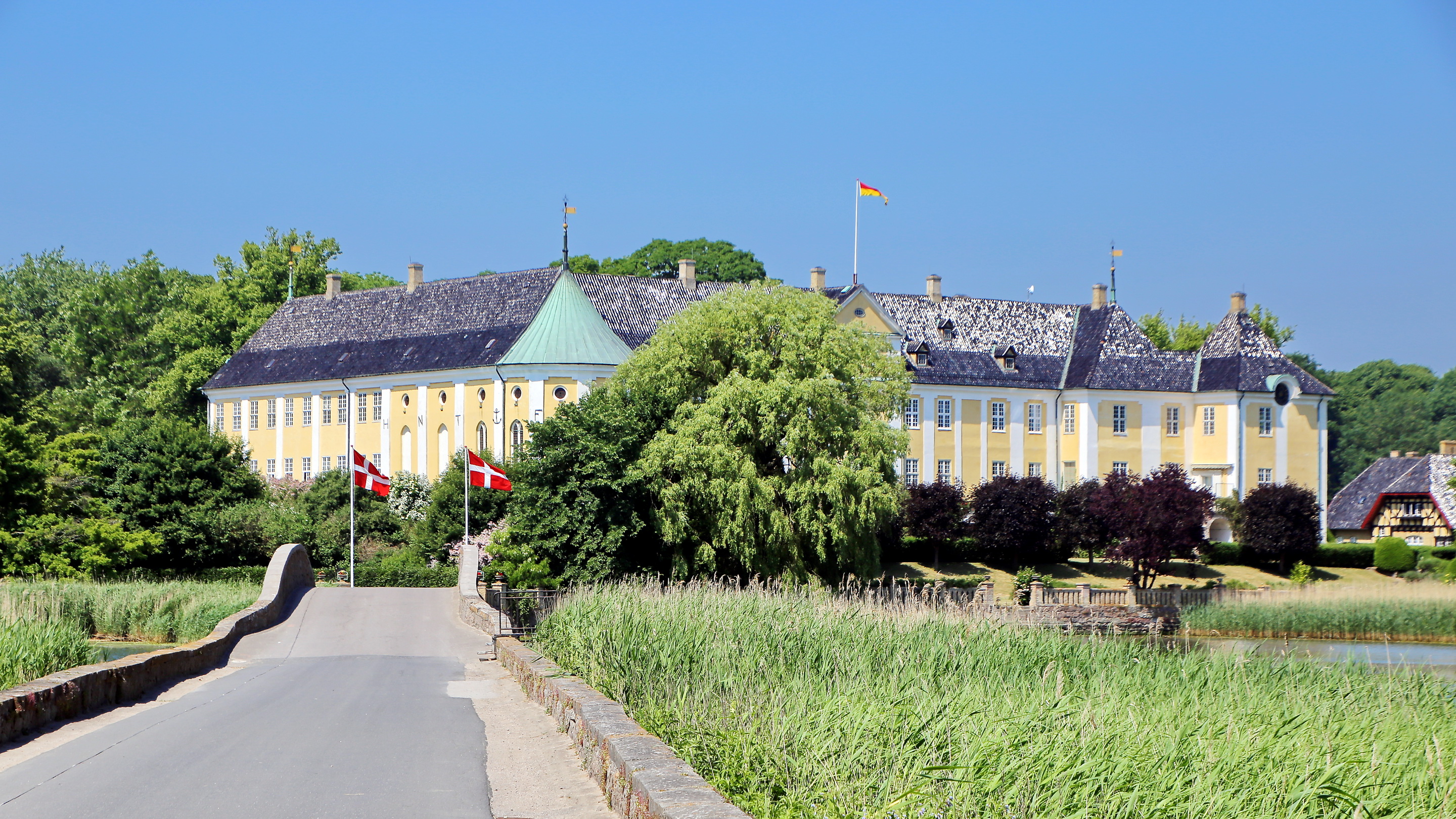|
Saltø
Saltø is a manor house and estate located west of Næstved in southeastern Denmark. The estate was acquired by Carl Adolph von Plessen in 1725 and had been owned by the von Plessen family since then. The main building from the second half of the 16th century and two half-timbered buildings from the second half of the 18th century were listed on the Danish registry of protected buildings and places in 1918. The estate covers . History The first known owner of Saltø was Jacob Fleb. After his death in 1351, his children sold it to Nicolaus af Jura. In 1353, Nicolaus af Jura's son sold the estate to their relative Herman af Jura. In 1377, Saltø was acquired by Count Ernst af Gleichen. In 1386, he sold Saltø to Margaret I. In 1393, she granted to the Diocese of Toskilde. After the Reformation, in 1536, it was confiscated by the crown along with all other church property. It was then administrated as a royal fief. In 1646, Christian IV ceded it to his son by Kirsten Munk, Valdema ... [...More Info...] [...Related Items...] OR: [Wikipedia] [Google] [Baidu] |
Listed Buildings In Næstved Municipality
This is a list of listed buildings in Næstved Municipality, Denmark ) , song = ( en, "King Christian stood by the lofty mast") , song_type = National and royal anthem , image_map = EU-Denmark.svg , map_caption = , subdivision_type = Sovereign state , subdivision_name = Danish Realm, Kingdom of Denmark .... The list 4160 Herlufmagle 4171 Glumsø 4250 Fuglebjerg 4262 Sandved 4684 Holmegaard 4700 Næstved 4733 Tappernøje 4736 Karrebæksminde References External links Danish Agency of Culture {{DEFAULTSORT:Listed buildings in Nastved Municipality Næstved ... [...More Info...] [...Related Items...] OR: [Wikipedia] [Google] [Baidu] |
Carl Adolph Von Plessen
Carl Adolph von Plessen (18 May 1678 - 30 January 1758) was a Danish statesman and landowner. He played a central role during the early reign of Christian VI but fell out of favour at the court and resigned in 1733. He was a major stakeholder in the Danish Asia Company and the Danish West Indies Company and owned a number of estates in Denmark and the Danish West Indies. Early life and education Carl Adolf von Plessen was born on 18 May 1678 in Mecklenburg, the son of chamberlain and later president of the Treasury Christian Siegfried von Plessen (1646-1723) and Sophia Agnes von Lepel (c. 1650–84). He was the brother of Christian Ludvig von Plessen. He studied at Utrecht University. Political career Plessen accompanied Prince Carl on his grand tour in 1696–99. He later followed the prince back to Denmark where he served first as his '' Hofmeister'' and from 1708as his chief chamberlain (''overkammerherre''). Frederik IV's marriage to Anna Sophie divided the royal family ... [...More Info...] [...Related Items...] OR: [Wikipedia] [Google] [Baidu] |
Carl Adolf Von Plessen
Carl Adolph von Plessen (18 May 1678 - 30 January 1758) was a Danish statesman and landowner. He played a central role during the early reign of Christian VI but fell out of favour at the court and resigned in 1733. He was a major stakeholder in the Danish Asia Company and the Danish West Indies Company and owned a number of estates in Denmark and the Danish West Indies. Early life and education Carl Adolf von Plessen was born on 18 May 1678 in Mecklenburg, the son of chamberlain and later president of the Treasury Christian Siegfried von Plessen (1646-1723) and Sophia Agnes von Lepel (c. 1650–84). He was the brother of Christian Ludvig von Plessen. He studied at Utrecht University. Political career Plessen accompanied Prince Carl on his grand tour in 1696–99. He later followed the prince back to Denmark where he served first as his '' Hofmeister'' and from 1708as his chief chamberlain (''overkammerherre''). Frederik IV's marriage to Anna Sophie divided the royal family a ... [...More Info...] [...Related Items...] OR: [Wikipedia] [Google] [Baidu] |
Denmark
) , song = ( en, "King Christian stood by the lofty mast") , song_type = National and royal anthem , image_map = EU-Denmark.svg , map_caption = , subdivision_type = Sovereign state , subdivision_name = Kingdom of Denmark , established_title = Consolidation , established_date = 8th century , established_title2 = Christianization , established_date2 = 965 , established_title3 = , established_date3 = 5 June 1849 , established_title4 = Faroese home rule , established_date4 = 24 March 1948 , established_title5 = EEC accession , established_date5 = 1 January 1973 , established_title6 = Greenlandic home rule , established_date6 = 1 May 1979 , official_languages = Danish , languages_type = Regional languages , languages_sub = yes , languages = GermanGerman is recognised as a protected minority language in the South Jutland area of Denmark. , demonym = , capital = Copenhagen , largest_city = capital , coordinates = , ethnic_groups = , ethnic_gro ... [...More Info...] [...Related Items...] OR: [Wikipedia] [Google] [Baidu] |
Count
Count (feminine: countess) is a historical title of nobility in certain European countries, varying in relative status, generally of middling rank in the hierarchy of nobility. Pine, L. G. ''Titles: How the King Became His Majesty''. New York: Barnes & Noble, 1992. p. 73. . The etymologically related English term " county" denoted the territories associated with the countship. Definition The word ''count'' came into English from the French ''comte'', itself from Latin '' comes''—in its accusative ''comitem''—meaning “companion”, and later “companion of the emperor, delegate of the emperor”. The adjective form of the word is " comital". The British and Irish equivalent is an earl (whose wife is a "countess", for lack of an English term). In the late Roman Empire, the Latin title '' comes'' denoted the high rank of various courtiers and provincial officials, either military or administrative: before Anthemius became emperor in the West in 467, he was a mil ... [...More Info...] [...Related Items...] OR: [Wikipedia] [Google] [Baidu] |
Gunderslevholm
Gunderslevholm is a manor house and estate located 12 km northwest of Næstved in southeastern Denmark. Gunderslevholm has been owned by members of the Neergaard (noble family), de Neergaard family since 1803. The main building is located on high ground just west of the Suså River, Susaa river. It was originally a Baroque architecture, Baroque-style mansion built in 1729 for Carl Adolph von Plessen but was in 1787 adapted to the Neoclassical architecture, Neoclassical style. Gunderslevholm covers 2,020 hectares of land and 276 hectares of lake (2023). History Early history Gunderslevholm was in the Middle Ages located in the village of Gunderslevmagle, The manor was in the beginning of the 14th century owned by Niels Pedersen who passed it on to his sons Peder Nielsen and Jens Nielsen. Jens Nielsen sold it to Johannes Mogensen Grubbe, a judge of Zealand, in 1333. Grubbe constructed a fortified house on the estate, but it was destroyed by king Valdemar IV of Denmark, Valdemar IV's ... [...More Info...] [...Related Items...] OR: [Wikipedia] [Google] [Baidu] |
Harrestedgård
Harrestedgård, also known as Harrested Manor (Danish language, Danish: Harrested Hovedgård), is a manor house and estate located 10 kilometres northwest of Næstved, Denmark. The main building, which partly dates from the Middle Ages and partly from the 1840s, was listed on the Listed buildings in Næstved Municipality, Danish registry of protected buildings and places in 1918. History Rani and Markmand families In the Middle Ages, Harrestedgaard was located in a village named Harrested. The first known owner of the estate is Karl Nielsen Rani. After his death in 1344, Harrestedgård passed to his two children. his daughter, Ingerd Karlsdatter Rani, the widow of Peder Grubbe, brought her half of the estate into her second marriage with Iven Markmand. Iven Markmand became the sole owner of the estate when his brother-in-law died in 1366. Harrestedgård then remained in the hands of the Markmand family for the next 150 years. Parsberg family In around 1503, Jørgen Evertsen Ma ... [...More Info...] [...Related Items...] OR: [Wikipedia] [Google] [Baidu] |
Førslevgaard
Førslevgaard is a manor house and estate located close to Fuglebjerg, Næstved Municipality, approximately 90 kilometres southwest of Copenhagen, Denmark. It has since 1803 been owned by members of the Neergaard (noble family), de Neergaard family. The three-winged, Baroque architecture, Baroque-style main building was built for Carl Adolph von Plessen in 1726. It was listed on the Listed buildings in Næstved Municipality, Danish registry of protected buildings and places in 1918. Nearby Førslev Church belonged to Førslevgaard from 1544 to 1914. A number of former owners from the influential Beck family, who owned the manor from 1495 to 1659, are buried in the church. History Early history Førslevgaard takes its name after the village of Førslev where it was located. It is first mentioned in 1347 when it was bought by Jep Andersen Halvegge from Hælenborg Olufsdatter Bille solgte. Jep Andersen Halvegge was succeeded by his son, Evert Jepsen Halvegge, whose daughter and onl ... [...More Info...] [...Related Items...] OR: [Wikipedia] [Google] [Baidu] |
Carl Of Denmark
Haakon VII (; born Prince Carl of Denmark; 3 August 187221 September 1957) was the King of Norway from November 1905 until his death in September 1957. Originally a Danish prince, he was born in Copenhagen as the son of the future Frederick VIII of Denmark and Louise of Sweden. Prince Carl was educated at the Royal Danish Naval Academy and served in the Royal Danish Navy. After the 1905 dissolution of the union between Sweden and Norway, Prince Carl was offered the Norwegian crown. Following a November plebiscite, he accepted the offer and was formally elected King of Norway by the Storting. He took the Old Norse name ''Haakon'' and ascended to the throne as Haakon VII, becoming the first independent Norwegian monarch since 1387. As king, Haakon gained much sympathy from the Norwegian people. Although the Constitution of Norway vests the King with considerable executive powers, in practice Haakon confined himself to non-partisan roles without interfering in politics, a practi ... [...More Info...] [...Related Items...] OR: [Wikipedia] [Google] [Baidu] |
Ole Worm
Ole Worm (13 May 1588 – 31 August 1654), who often went by the Latinized form of his name Olaus Wormius, was a Danish physician, natural historian and antiquary. He was a professor at the University of Copenhagen where he taught Greek, Latin, physics and medicine. Biography Worm was the son of Willum Worm, who served as the mayor of Aarhus, and was made a rich man by an inheritance from his father. Ole Worm's grandfather Johan Worm, a magistrate in Aarhus, was a Lutheran who had fled from Arnhem in Gelderland while it was under Catholic rule. Worm married Dorothea Fincke, the daughter of a friend and colleague, Thomas Fincke. Fincke was a Danish mathematician and physicist, who invented the terms ' tangent' and ' secant' and taught at the University of Copenhagen for more than 60 years. Through Fincke, Worm became connected to the powerful Bartholin family of physicians, and later theologians and scientists, that dominated the University of Copenhagen throughout th ... [...More Info...] [...Related Items...] OR: [Wikipedia] [Google] [Baidu] |
Scanian War
The Scanian War ( da, Skånske Krig, , sv, Skånska kriget, german: Schonischer Krieg) was a part of the Northern Wars involving the union of Denmark–Norway, Brandenburg and Sweden. It was fought from 1675 to 1679 mainly on Scanian soil, in the former Danish and Norway provinces along the border with Sweden, and in Northern Germany. While the latter battles are regarded as a theater of the Scanian war in English, Danish, Norwegian and Swedish historiography, they are seen as a separate war in German historiography, called the Swedish-Brandenburgian War (german: link=no, Schwedisch-Brandenburgischer Krieg). The war was prompted by Swedish involvement in the Franco-Dutch War. Sweden had allied with France against several European countries. The United Provinces, under attack by France, sought support from Denmark–Norway. After some hesitation, King Christian V started the invasion of Skåneland (Scania, Halland, Blekinge, and sometimes also Bornholm) in 1675, while the ... [...More Info...] [...Related Items...] OR: [Wikipedia] [Google] [Baidu] |
Gavnø
Gavnø is a small island off the west coast of Zealand in Næstved Municipality, Denmark. Located some 6 km south-west of Næstved, it has an area of 5.6 km2, and, as of 1 January 2010, it has a population of 57. Gavnø Castle Gavnø is now associated mainly with Gavnø Castle, an impressive Rococo manor house with an attractive park. The park surrounding the estate is known for its rare trees, rose garden and, above all, its extensive display of bulbs. The first historical mention of Gavnø is in King Valdemar's census book from 1231. The main building was built in 1402-1408, expanded in 1584-1663-1682 and remodeled to the current Rococo manor in 1755-1758. The manor house was apparently built to defend Denmark's western coasts. In the 15th century, Queen Margaret I opened St Agnes' Priory there, catering for nuns from aristocratic families. The chapel can still be seen in the castle's southern wing although it has since been extended. In 1737, Count Otto Thott ... [...More Info...] [...Related Items...] OR: [Wikipedia] [Google] [Baidu] |





.jpg)

